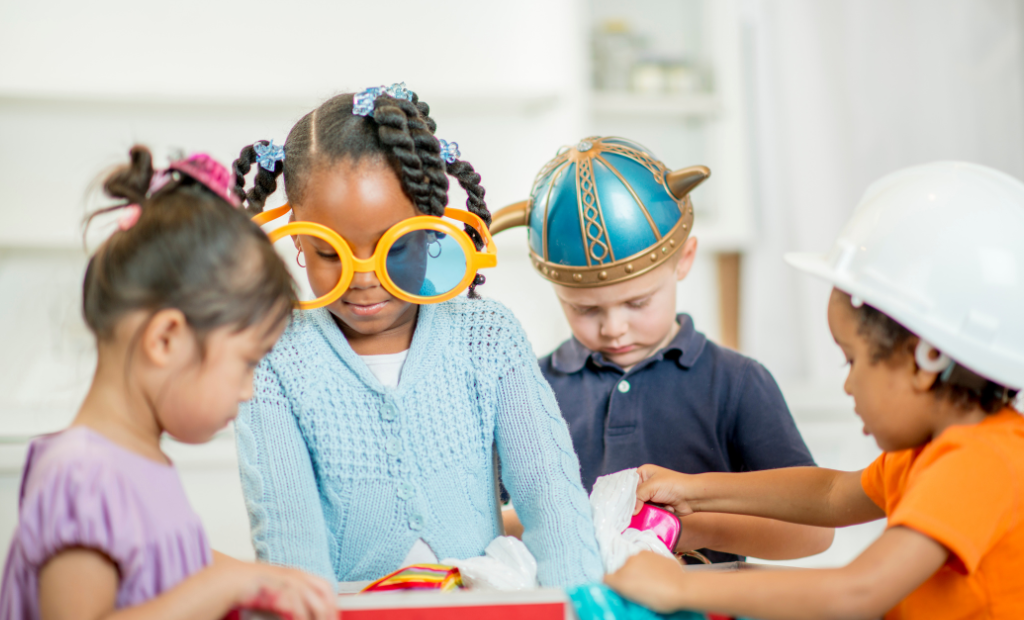How children develop their sense of identity
What is self-identity? How does it develop in 3-7-year-olds? And why is it important in relation to diversity?
These are the questions that are considered through this blog post. Once we understand the importance of the development of self-identity, we also understand the importance that positive-diversity-understanding plays in that development. We finish this post with a few suggestions of how we can help our children to experience diversity and inclusion in positive and enjoyable ways.
Self-identity is how you identify and define yourself. It is the awareness of your unique characteristics and qualities, and what sets you apart from others; the feeling of ‘self’ that makes you uniquely ‘you’.
Self-identity is formed from a combination of elements, such as:
Self-identity traits inherited from family:
Gender, ethnicity, name, age, health, physical attributes.
Self-identity traits developed as we age and experience the wider world:
Personality, values, cognitive style, interests (work and leisure), spirituality, faith, politics.
You may try, but it really is impossible, to find two people with the exact same characteristics of birth, family, culture, and traits. Self-identity really is unique to you!
Child development and self-identity
Whatever your age today, it has taken a whole lifetime for your current identity of self to develop. Children have not had such a long life nor varied range of experiences from which to draw and develop their self-identity; it’s a continual work in progress.
In addition, between the ages of 3-7-years, children’s learning is at the mercy of the experiences provided to them by their adult carers and educators. If these experiences lack examples of diversity and inclusion, our children will never get to know the richness and warmth of what diversity really is, what it means, and how a deep understanding of it can really enrich their lives.
How can we help our children to experience diversity and inclusion?
Children learn from their environments, both physical and social. We can utilise this knowledge to ensure we introduce our children to environments where they can see and interact with others who are like them, as well as to environments where they will see and interact with people who are different to themselves. We could:
- Take them to play areas, parks, or new toddler groups where they will experience children of the same/or different abilities, ethnicity, religion, language, gender, etc.
- Provide them with books and play materials depicting a range of identities: different races, disabilities, ages, types of families including single parents, same-sex parents, grandparents raising children.
- Set up role-play clothing that allows them to play in gender-flexible ways and to act out scenarios reflecting a variety of family types, cultures, and communities.
Each child is unique. Let’s ensure their self-identity is too.
Dr Clare Seymour
Clare has spent much of her professional career (over 30 years) in international settings. Part of her Doctoral research involved exploring the often hidden aspects of institutional racism. As a result she has a longstanding interest in, and passion for, promoting positive Diversity.
In addition to school music-teaching, Clare also has over 10 years’ experience working as an international music examiner – an understanding and respect for Diversity is so crucially important in every aspect of her practice.



